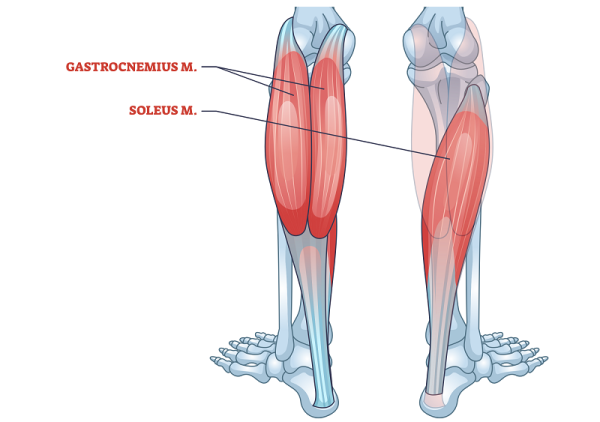Overview
The Foam Roller Calves movement involves sitting on the floor, placing a foam roller under your lower leg, and using your bodyweight to apply pressure while rolling back and forth. The movement can be performed with both legs at once for general release or one leg stacked over the other to increase pressure and isolate specific tension points.
This technique is not a strength exercise but an effective mobility and recovery tool to enhance muscle health, promote blood flow, and reduce post-workout soreness. It is commonly used by athletes, runners, lifters, and sedentary individuals experiencing tightness in the calves or lower limbs.
How to Foam Roll Your Calves

Setup: Sit on the floor with your legs extended and place a foam roller horizontally under your calves.
Support Your Upper Body: Place your hands on the floor behind you and lift your hips slightly so your weight shifts onto the foam roller.
Begin Rolling: Roll slowly from the bottom of the calf (just above the ankle) to the top (below the knee) using small forward and backward movements.
Apply Pressure: To increase pressure, cross one leg over the other so more weight is placed on the lower calf.
Target Trigger Points: If you find a tender or tight spot, pause and hold for 10–20 seconds until the tension reduces.
Repeat: Continue rolling for 20–40 seconds per leg, switching sides as needed.
Tips for Proper Form
Move slowly to properly identify and release tight areas.
Breathe deeply to promote muscle relaxation during the rolling.
Keep your body elevated with your arms to apply consistent pressure.
Do not roll over the knee joint—focus only on the soft tissue of the calf.
Use unilateral rolling (one leg at a time) for deeper release and better control.
Common Mistakes
Rolling too fast: Limits the effectiveness and can skip over trigger points.
Holding your breath: Tension in your body reduces the benefits of release.
Applying too much pressure immediately: Start light and build gradually to avoid discomfort or bruising.
Rolling directly on bones or joints: Avoid the Achilles tendon and knee to prevent irritation.
Skipping sore spots: The goal is to spend time on tight areas to help release tension.
Benefits of the Foam Roller Calves Exercise
Releases muscle tightness: Helps break down adhesions and reduce muscle knots in the calves.
Improves ankle mobility: Loosens surrounding tissues that restrict ankle dorsiflexion and plantar flexion.
Enhances blood flow and recovery: Stimulates circulation for quicker post-workout recovery and soreness reduction.
Prevents lower leg injuries: Reduces the risk of calf strains, Achilles tendonitis, and plantar fasciitis.
Boosts performance in running and jumping: Calf mobility enhances stride length, foot control, and vertical power.
Low-cost, portable recovery tool: Can be performed anywhere with a basic foam roller.
Reduces DOMS (delayed onset muscle soreness): Speeds up recovery time after intense lower body training.
How to Incorporate Into Your Routine
- For Warm-Ups: Perform for 30–45 seconds per leg before a workout to stimulate circulation and prepare the muscle tissue.
- For Cool-Downs: Use post-workout for 1–2 minutes per leg to reduce muscle stiffness and speed up recovery.
- For Daily Mobility: Include as part of a daily routine if you experience frequent calf tightness due to running, walking, or prolonged sitting.
- For Rehabilitation: Recommended under professional guidance to support recovery from calf strains or Achilles tightness.
- For Travel or Long Sitting: Great for releasing tension after long flights, car rides, or desk-bound workdays.
Muscles Worked

Frequently Asked Questions
How often should I foam roll my calves?
2–3 times per week is sufficient for general maintenance. Daily use is safe if done gently.
Should it hurt when I foam roll?
Mild discomfort is normal, but it should not be painful. Avoid pressing too hard into sore spots.
Can foam rolling replace stretching?
No. Foam rolling is complementary to stretching and should be used together for optimal mobility.
What type of foam roller is best for calves?
Medium-density rollers are ideal for beginners. Advanced users may prefer textured rollers for deeper pressure.
Is it normal for calves to feel sore after rolling?
Some tenderness is expected, especially if you’re new to foam rolling. It should subside within a day or two.
